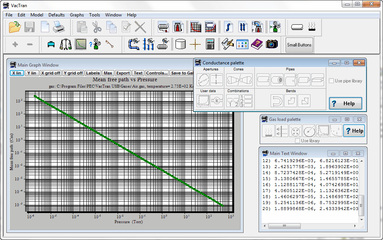Overview

VacTran was designed to facilitate the process of modeling a vacuum system. It was developed to solve common, real problems faced by industry and national labs.
Rapid and accurate modeling of vacuum systems enables informed decisions and success in new product development and advanced experiments.
Vacuum calculations are inherently complex and labor-intensive. Engineers and scientists need to rapidly model and predict operational performance and design alternatives without getting bogged down by the math.
Real-world vacuum system performance can be extremely sensitive to many variables. Operators need a tool to predict the boundaries of performance.
Rapid and accurate modeling of vacuum systems enables informed decisions and success in new product development and advanced experiments.
Vacuum calculations are inherently complex and labor-intensive. Engineers and scientists need to rapidly model and predict operational performance and design alternatives without getting bogged down by the math.
Real-world vacuum system performance can be extremely sensitive to many variables. Operators need a tool to predict the boundaries of performance.
Approach

The VacTran desktop
The original approach to designing VacTran has remained consistent since the beginning:
- Target the application to the most common vacuum system design problems.
- Use widely published, publicly available formulas so that results can be reproduced by the user with hand calculations or a spreadsheet.
- Focus the value on the user interface, with the emphasis on simplifying and accelerating the user's ability to solve real-world problems with the confidence of widely accepted flow equations.

